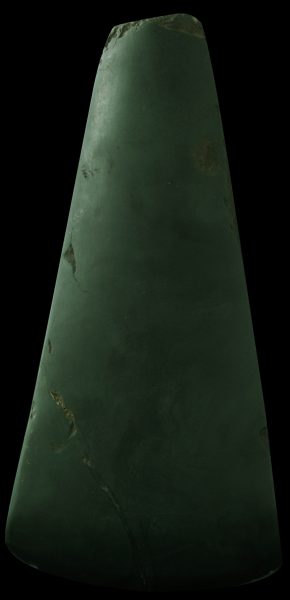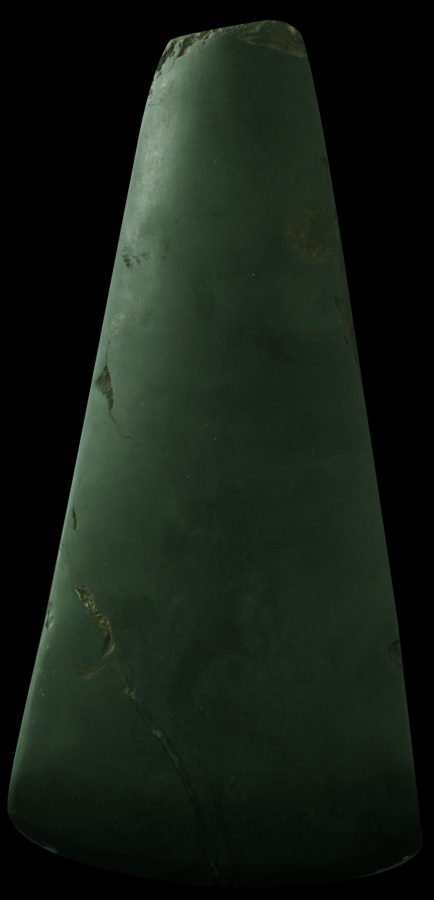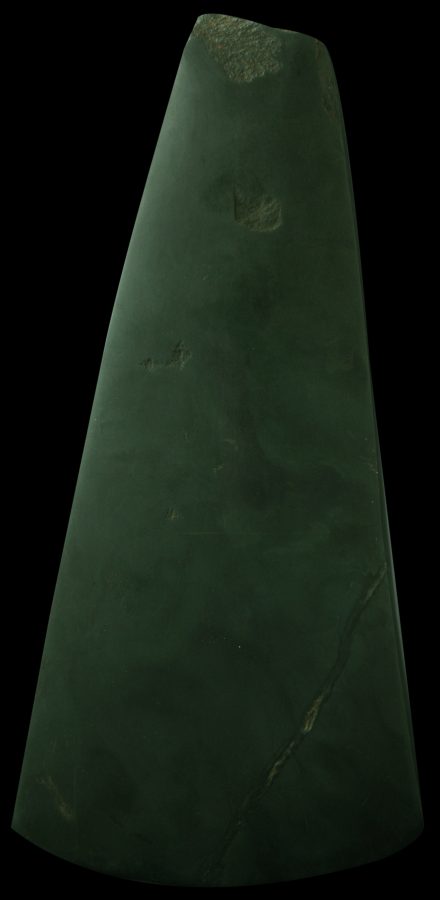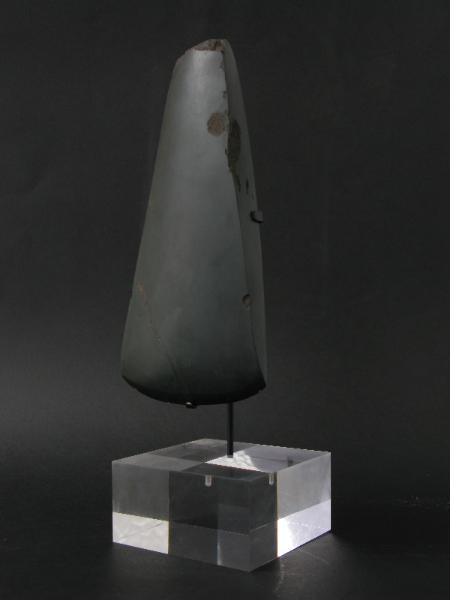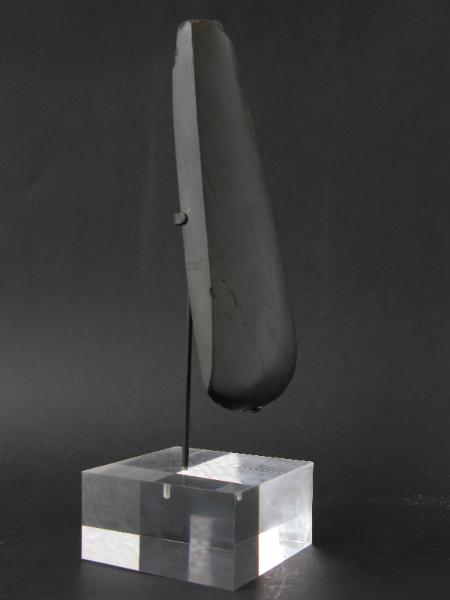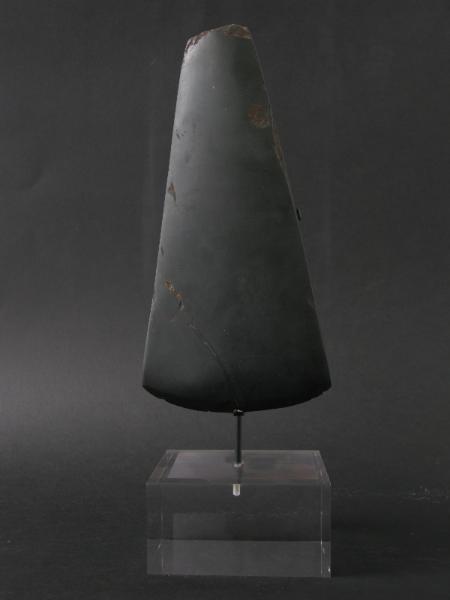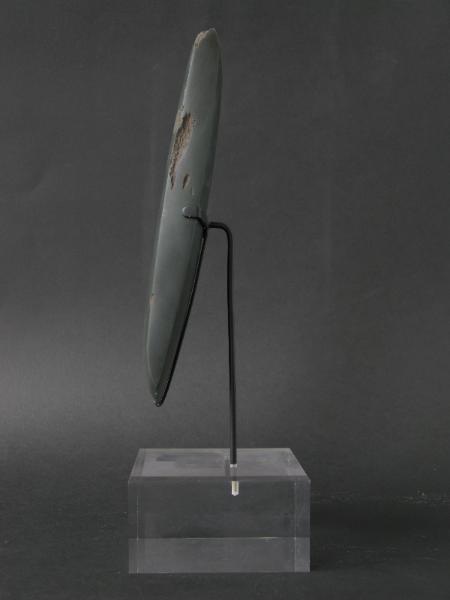This superb adze blade, in green-grey nephrite, is larger than most examples. It has a pleasing hue and an excellent three-dimensional shape with carefully rounded contours. A naturally occurring inclusion is at one corner (analysis has shown this to be an inclusion rather than a break or fracture, and as such adds to the texture and decorative value.)
The adze comes from the Middle Sepik River region of Papua New Guinea. The Latmul people dominate this region. They lived in small villages along the river and its many tributaries. The villages were built around the haus tambaran, or spirit house, the most important structure in the village and usually the tallest. Masks, statues and adzes of this type were kept inside the spirit house and only initiated men were permitted inside. Spirits were believed to inhabit the objects kept inside the spirit house. The people along the Sepik River also were notable for their extensive scarification, particularly to their backs and faces.
Adzes differ from an axe in that the blade of an adze is set at right angles to the tool’s shaft (like a hoe or plane), unlike the blade of an axe which is set in line with the shaft. Adzes were thus used for digging and gouging, although this example would have had ceremonial purposes.
This example is almost certainly nineteenth century or earlier – important ceremonial objects such as this were passed from generation to generation.
Note: This adze comes with an attractive custom-made stand.


Tribesmen of the Middle Sepik.


